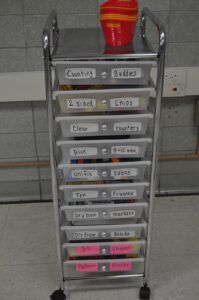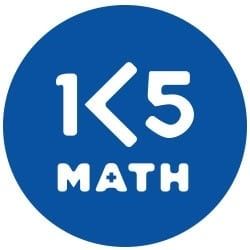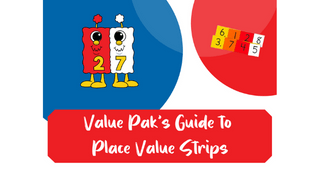Today, Shannon answers your questions about manipulatives!

Do you have a question?
Submit it here: https://goo.gl/CPbTZB
Read on for this week’s sprinkle of Magical Math Dust!
Q: Should we use manipulatives in every lesson?
A: No! Students understand math better using the CPA (concrete pictorial abstract) approach. When first introducing a concept, the goal is to help the kids gain a conceptual understanding as you show them the concept. Use the Math Salad Bar to allow students to use manipulatives as needed to support that conceptual understanding.
However, don’t make kids do all 30 problems! If you don’t have enough time to expose kids to a wide variety of problems using a range of manipulatives, remember that assigning students to complete two problems with the manipulatives is a lot better. Kids will have a better understanding of what’s going on in the problems they read. You can use this as an informal assessment of progress. We want kids to be able understand concepts instead of dragging them through the textbook as we “cover” the material, so don’t force it if it doesn’t make sense!
Q: Is there a magical list somewhere of what kinds of manipulatives would you use for which math concepts?
 A: We don’t have anything that matches up every single math concept with every single manipulative, but if you understand the CPA approach, there are a few basic manipulatives that you could use for a wide range of concepts. The place value discs and strips could be used for all algorithms and operations and place value, as they would be the best fit to show that type of idea. An abacus can be used with a variety of concepts, particularly to help build number sense. Geometry manipulatives are pretty specialized. As you go throughout your year, you will start to match up what should be in the Math Salad Bar for a specific unit. Also, as you implement backward design of lessons, starting with the big picture of the conceptual understanding that students should have after the lesson, you should be able to better identify which manipulatives are needed for various lessons to help kids acquire the conceptual understanding they need.
A: We don’t have anything that matches up every single math concept with every single manipulative, but if you understand the CPA approach, there are a few basic manipulatives that you could use for a wide range of concepts. The place value discs and strips could be used for all algorithms and operations and place value, as they would be the best fit to show that type of idea. An abacus can be used with a variety of concepts, particularly to help build number sense. Geometry manipulatives are pretty specialized. As you go throughout your year, you will start to match up what should be in the Math Salad Bar for a specific unit. Also, as you implement backward design of lessons, starting with the big picture of the conceptual understanding that students should have after the lesson, you should be able to better identify which manipulatives are needed for various lessons to help kids acquire the conceptual understanding they need.
We also have kits on our website designed specifically for numeracy, number sense, and problem solving that we have created with manipulative suggestions for each grade level.
Q: Where do we start in the upper grades if students are very far behind on foundational skills (ex. lacking number sense)? Do we back up and build from there or try and remediate as we go along?
A: Anytime you have upper grade-level students who are falling behind, it is very difficult to try to catch them up. These students do need intervention. If you’re using the Response to Intervention (RtI) model, then students should be getting intervention for the areas in which they’re lacking. Otherwise, students who are behind still need to be exposed to grade level content. If you are teaching with CPA and building a conceptual understanding for difficult concepts, kids will have a better grasp of those concepts moving on.
Q: Is there a list of Math with Someone games to use for each math topic? For example: What games are good for double digit addition? What games are good for multiplication?

A: Yes! there is a really great website https://www.k-5mathteachingresources.com/. On this website they have aligned quality math games with the 8 Mathematical Practices, and each of the state standards as well. You can look up your state standards and it will tell you which games you should use. Look through some of the free games and consider spending the $14.95 for a single user license and full access to all the games! It’s absolutely an amazing resource!



